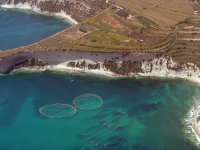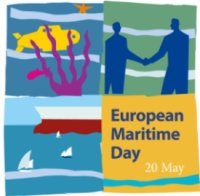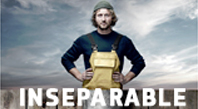The future of aquaculture

Conference "Aquaculture in the Reform of the Common Fisheries Policy"
European Parliament Intergroup “Climate change, Biodiversity and Sustainable Development”, 7 March 2012
According to FAO, aquaculture production worldwide has increased significantly, representing in 2008 37% of the fishery products produced. Europe is the top global market for seafood products, but depends on imports at 65% of its needs. EU aquaculture is in stagnation, with an increase of only 0.5% since 2001. Commissioner Maria Damanaki spoke at the event "Aquaculture in the Reform of the Common Fisheries Policy" about the development of aquaculture in the EU and the impact that the reform would have on the sector.

Dear Chairman, dear Members of Parliament, dear participants,
I would like to thank the Intergroup for organising another important event on a key element of the fisheries reform package: the future of aquaculture.
We have exchanged ideas about economic sustainability at last month's event on the reform proposals. The challenge ahead in aquaculture is of a slightly different nature: making our European seafood businesses more competitive and innovative; we must create new jobs in the sector and make them attractive to young investors along the coasts and inland.
I know these jobs are a vital source of income in our coastal and rural areas, including in landlocked countries.
In numerous parts of the EU, we have ideal environmental conditions to farm aquatic species. The sector can count on advanced technologies, state-of-the-art research and skilled workers. I have visited myself quite a few of such installations, amongst others in Spain, Italy, Poland, Finland, Greece and Ireland -also in Norway, Russia and Turkey - and I am planning to do some more visits in central Europe this year. I have seen high-quality products in the EU, produced with the highest standards of environmental protection, animal health and consumer protection.
Despite all this, and contrary to a dramatic global uptake in the last decades, our overall EU production has been stagnating. The issue now is what the EU can do to kick-start a new revival?
INNOVATION
A first essential aspect is innovation. Or better, innovation built on tradition. The Commission is going to support R & D projects for new aquaculture species, for example.
Through the new European Maritime and Fisheries Fund, I propose to promote new forms of aquaculture that have the potential of transforming the industry, such as multi-use off-shore and non-food aquaculture, production of algae for the pharmaceutical or cosmetic industries or the production of bio-fuel. I have recently eaten some delicious algae looking and tasting like fish eggs.
However, everything does not need to be rebuilt from scratch. We also need to nurture the more "traditional" forms of aquaculture: salmon farming in the Atlantic, seabream, seabass and amberjack farming in the Mediterranean. These activities have been tremendously successful so far, as have traditional shellfish and freshwater aquaculture.
The new Fund, with the support of the Parliament I hope, could support projects that use new techniques, develop new products or processes, save energy or reduce environmental impacts.
GROWTH AND PROFESSIONALISATION
A competitive sector is also a professional sector, one that can more quickly adapt to market trends and consumer expectations. So a second element is the reform of the Common Market Organisation, which will reinforce Producers Organisations and Interbranch Organisations. The proposed creation of an Advisory Council for Aquaculture, which will act as a permanent consultation forum for all interested parties should also be seen in this perspective.
The reform also seeks to foster economic activity and stimulate Member States to create favourable conditions for investments. Cutting red tape and speeding up licensing will be crucial. I intend to favour exchanges between authorities and stakeholders later this year in a conference to be organised in Salzburg. My proposal is also to provide EU money supporting new business start-ups through the new Fund. I believe that the funds spent on aquaculture are good value for money, ladies and gentlemen!
LABELLING AND COMSUMERS INFORMATION
Thirdly, my proposal is that information on labels will have to become more precise. This will benefit consumers, but also EU producers, who can highlight the fact that their products have been made on the basis of the highest standards. I do not think that all producers from abroad will necessarily have the possibility of being that precise. We'll have to discuss, with the Member States, the Parliament and stakeholders how such labelling can be done in the most efficient manner. I am persuaded that we can win the battle of quality.
Beyond the labelling, we will need to bridge the communication gap between industry and consumers. We need to find the right way to stress: farmed fish is fresh, inexpensive, healthy, safe, traceable and locally produced.
ENVIRONMENTAL STANDARDS
The backbone of the CFP reform is sustainability. Aquaculture also has to develop in line with the high environmental, animal health, and food safety standards of the EU. We intend to assist farmers, particularly SMEs, with advisory services, training, life-long learning. The new Fund contains specific measures to promote organic aquaculture. A few species are already farmed organically in Europe; but we would like to extend that production, so as to offer consumers high-quality products while reducing environmental impacts.
The new fund also contains the possibilities to support farmers who make additional investments respecting the environment or those who invest in equipment protecting against wild predators.
In this environmental perspective, we need to ensure a level-playing field for operators in relation to access to waters and space. Member States will have to make sure that appropriate locations are found for the industry. This should obviously take into account local circumstances. The Fund will assist in identifying and mapping the most suitable areas. But the Member States have to take their own responsibilities.
THE PROCESS
To realise these ambitious objectives, EU Institutions and national authorities need to work better together. We also need to engage the stakeholders: industry, big and small, down to every link of the supply chain, but also consumers and representatives of civil society.
At EU level, I propose, developing together strategic guidelines containing the main priorities and general targets. Subsequently, Member States will be asked to adopt their own multiannual plans for aquaculture. Within this new framework, Member States will have the opportunity to exchange best practices, learn from each other and work together.
In sum, ladies and gentlemen,
Innovation, professionalization, appropriate labelling, taking into account the environmental consequences, are the issues which we need to promote within the new framework put on the table. All the elements of the reform package have been designed to develop the full potential of EU aquaculture and to turn the current challenges into business opportunities. It is now time for us to discuss these issues so as to create a consensus on what can be done to stimulate aquaculture.


 European Maritime Day 2013
European Maritime Day 2013 Reform of the Common Fisheries Policy
Reform of the Common Fisheries Policy 12 hours for Greece
12 hours for Greece